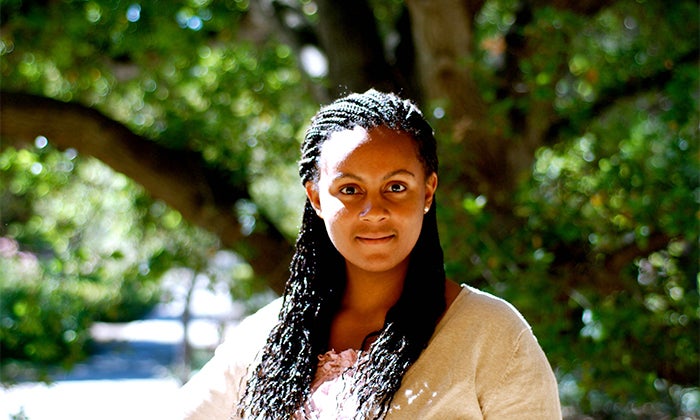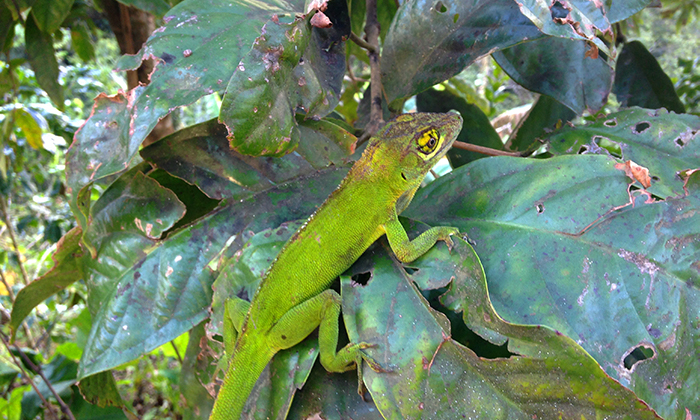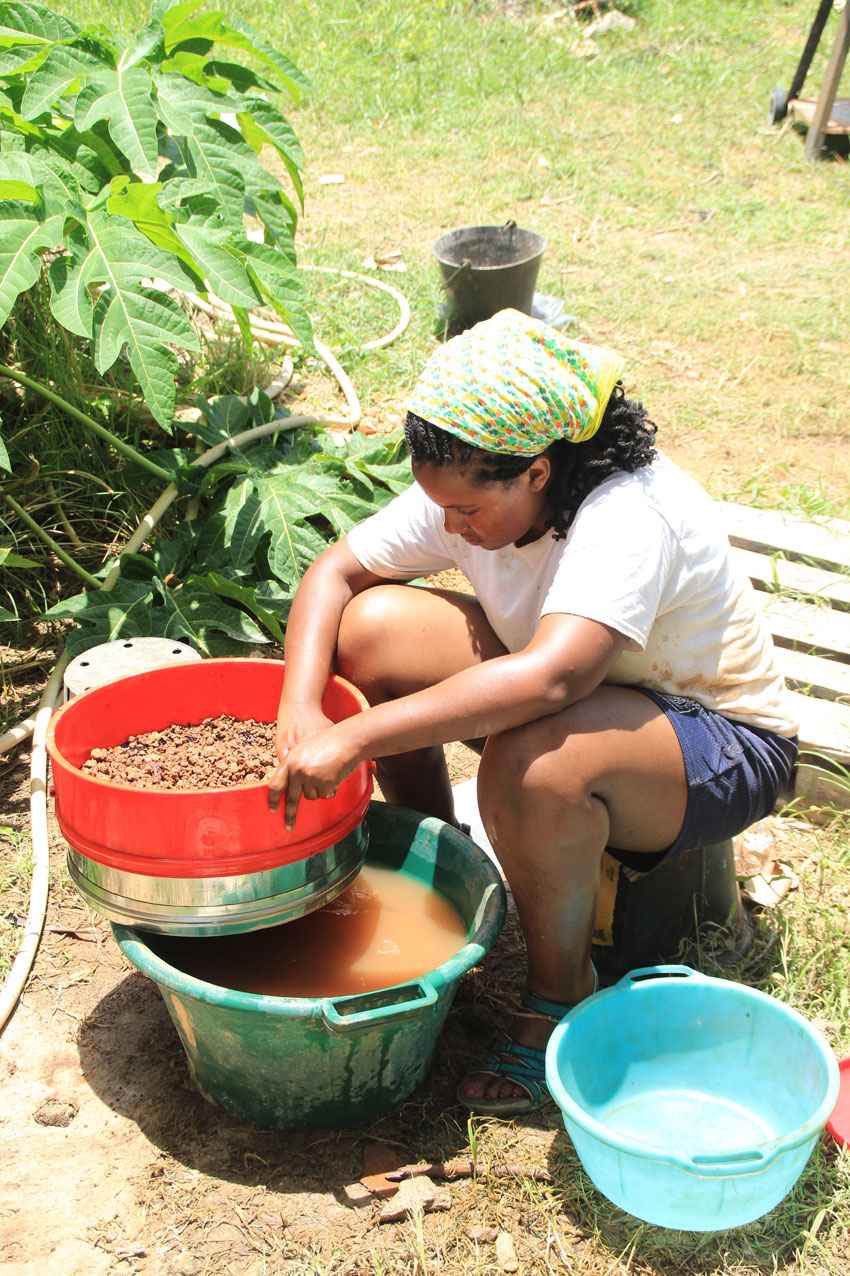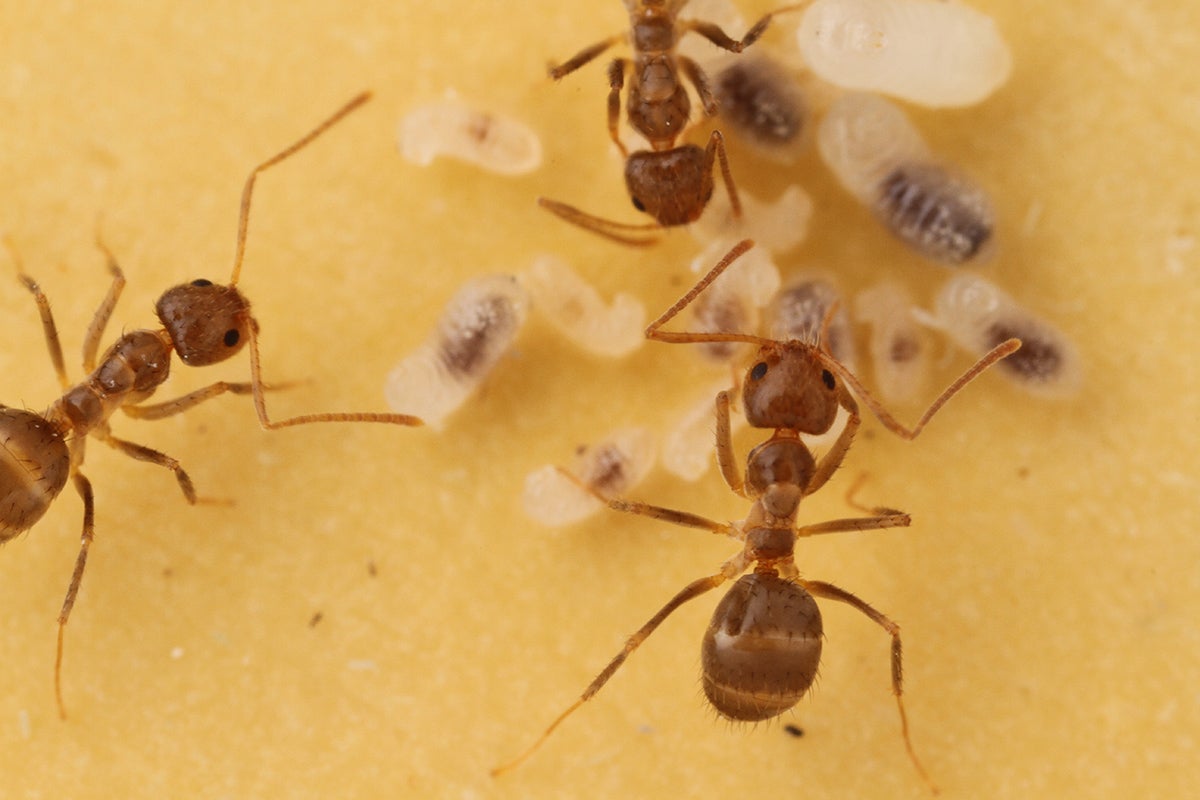Melissa Kemp Combines Art and Science in Study of Lizards
Melissa Kemp, an assistant professor in the Department of Integrative Biology, studies how extinction, biological diversification and colonization are shaped by environmental upheavals.

Melissa Kemp, an assistant professor in the Department of Integrative Biology, studies how extinction, biological diversification and colonization are shaped by environmental upheavals. She joined the faculty as a new hire in 2018, and this fall was announced as the winner of the Environmental Science Institute's Billy Carr Distinguished Teaching Fellowship.
Kemp and her team combine macroevolutionary theory with paleobiology, ecology and conservation biology in the field and the laboratory to understand how animals have responded to environmental changes in the past and how changes may affect them in the future.
You started your academic career in biology and later studied at Stanford and Harvard. What did you study there?
In both places, I was interested in how vertebrate communities respond to environmental change. I was working primarily in the Eastern part of the Caribbean, but really trying to understand how extinction and colonization patterns have shaped the lizard fauna that we have in the Caribbean today. If we can gain any insights from past instances of extinction, it might be informative of what communities might look like in the future as these communities undergo future environmental changes.
What drew you to the University of Texas at Austin?
I think that UT Austin is a wonderful institution. And UT actually has one of the greatest integrative biology departments in the country. We're at the same level of Stanford and Harvard. But we also have a lot of unique resources that those institutions don't have. And I think we're serving a demographic that is, in some ways, a much more diverse student body. So, we're pulling from all different communities, not only in Texas, but across the country – getting some of the top students who might not have thought college could be a place where they could succeed. That mission is aligned with my own mission of broadening participation in academia, in particular STEM.
Coming back to your research, why study lizards that live on islands?
A lot of scientists refer to islands as laboratories for ecology and evolution. For example, sometimes you'll have one species distributed over multiple islands, and those islands might be different sizes. They might have different topologies. They might be geographically oriented such that one gets more hurricane activity than another. So, you can ask, how is this species being impacted by different environmental pressures? Or how does the size of an island influence what species are present? We're really interested in those questions and islands provide a really great vehicle to study how populations persist or don't persist without us really having to do manipulations. Experiments have been done by nature already; we're just observing it.


Charles Darwin himself studied species living on islands with his work with finches in the Galapagos. Is your work similar?
There are some similarities in that lizards and finches have radiated into highly diverse, specialized lineages on islands, but there are also some differences. For one, we're incorporating fossil data into the research that we do. The fossil data from these islands allows us to look at species within a community prior to human colonization and prior to climate change so that we can see the before, during and after of these events. Darwin was studying the finches on a shorter timescale but was certainly interested in how evolutionary traits were being shaped by the environment. This shorter timescale is still a very important one, and researchers like Peter and Rosemary Grant who have studied Darwin's finches for over 40 years have shown that rapid evolution can happen at this timescale.
What plans do you have for the fellowship you received?
I'm really excited to have it because so much of the work that our lab is starting in Texas is meant to help conservation efforts in this state. Ultimately, we're trying to show that conservation can be improved by incorporating data from the fossil record. What we're planning on doing with funds from the Billy Carr Fellowship is getting ancient DNA from our fossils to corroborate our morphological identifications and also look at how genetic diversity has changed through time, as the landscape has changed.
In addition, we are hoping to support undergraduate research in the lab. One difficulty, especially for undergraduates interested in research, is that they're also trying to pay tuition or support themselves. It can be really hard trying to balance those two things. With additional funds to support undergraduate research, students working in my lab don't necessarily have to get a part-time job. Their research becomes a part-time job, which will make them more focused on the research they're doing.
You grew up in Granite, Maryland, a rural town outside of Baltimore. That's very different from a big city like in Austin. What was it like growing up there?
I really enjoyed growing up in that area just because it was a very close-knit community and I was surrounded by nature. My house was right next to a state park, which allowed me to explore – pick up all the sticks and bones I wanted. I had this access to nature that a lot of kids don't have access to that I think was very transformative for me growing up.
You've said that you're a "walking contradiction" because you have formal training in the arts [Kemp's secondary education was at a fine-arts school] and your current career in the sciences. Why might some view these disciplines as contradictory?
Well when one thinks about the arts, especially the visual arts, they think about qualitative skills, they think about emotions, subjectivity, whereas science is very objective, it's quantitative – it's stepping back and testing hypotheses.
But at the same time, there are a lot of skills in common with those two areas of inquiry. Both of them are very creative endeavors. With experimental design, for example, you might be building off of someone else's work – but you're adding something new to it. There's a lot of exploring the unknown in the sciences, just as there is with art. Art is also this process of constantly building upon itself, just like the sciences.
These lizards you study, Anoles, they're known to defend themselves with bites. Any comment there?
A lot of biologists will let the small ones bite them on the ear and wear the lizard like it's a fake earring. And you know, it's fine. It's like a little pinch – doesn't hurt that much…They're little, but sometimes ferocious lizards that are quite fun to be with in the field.



